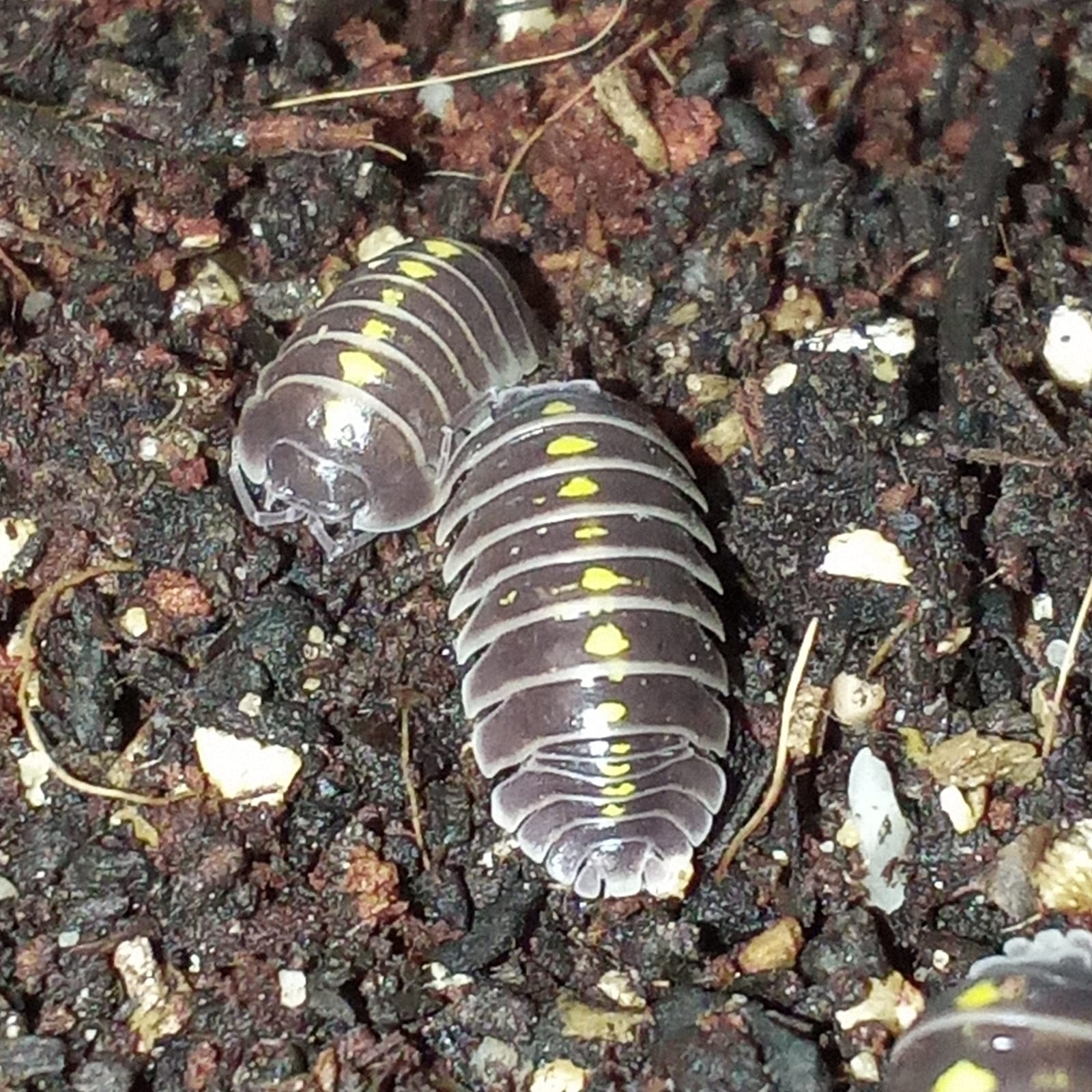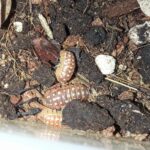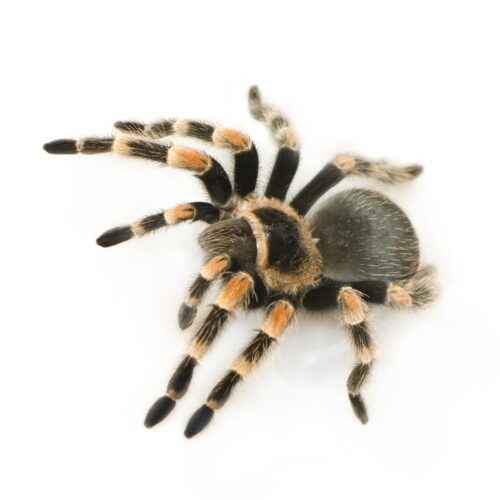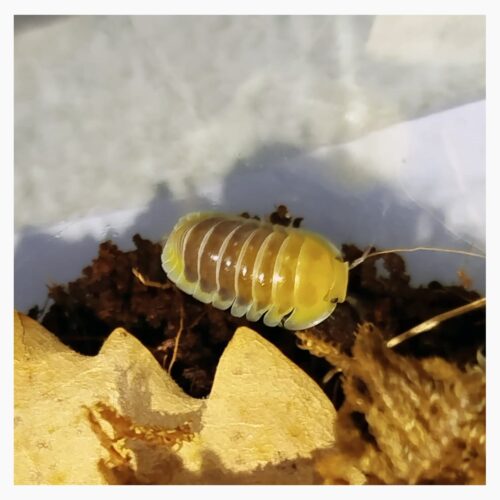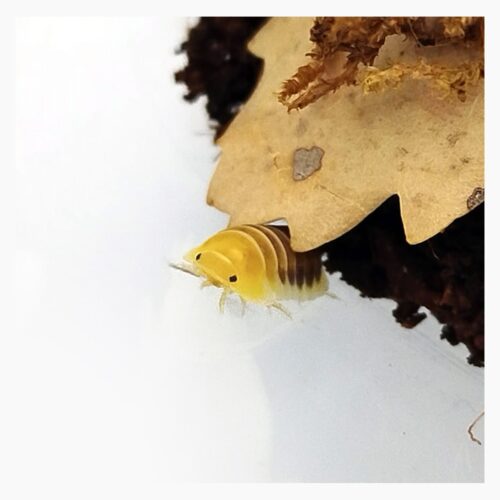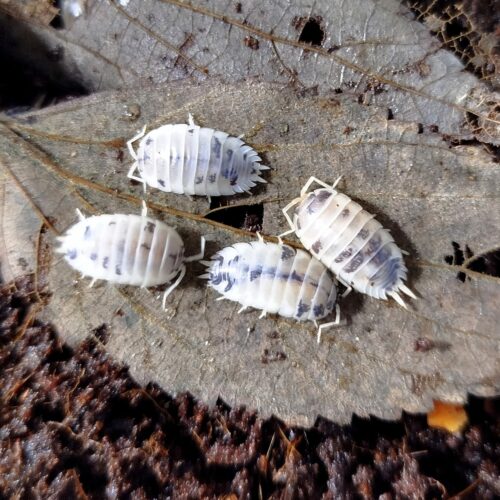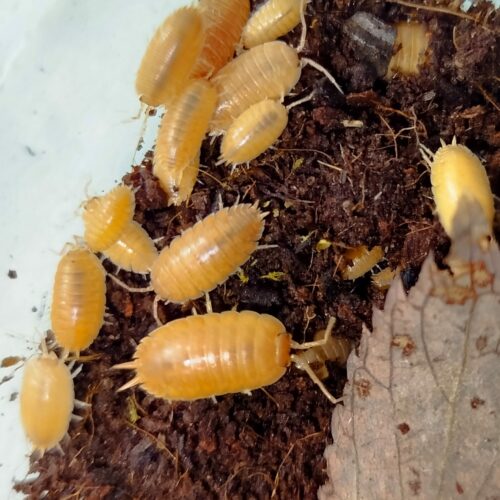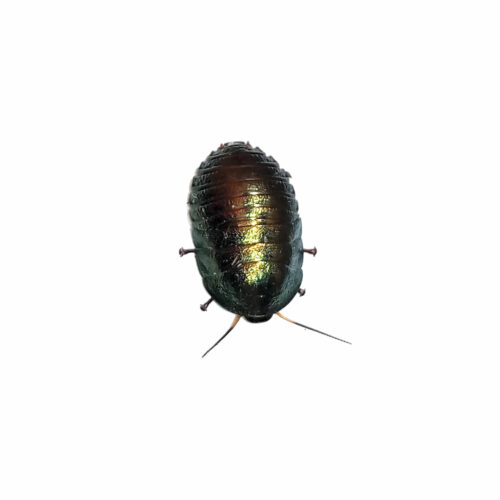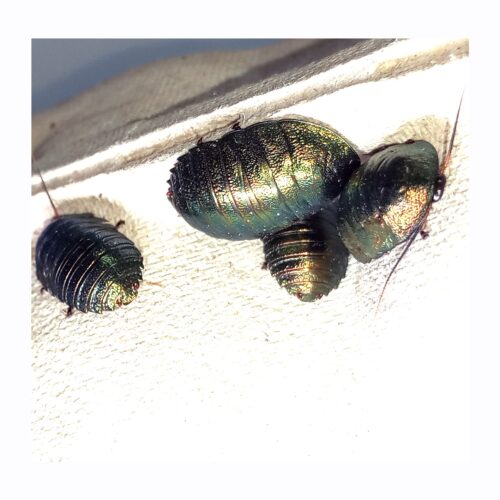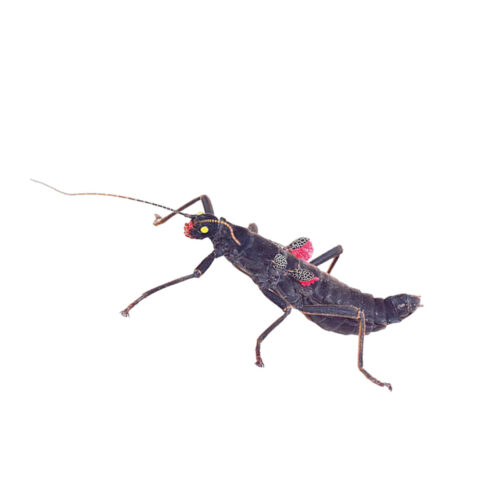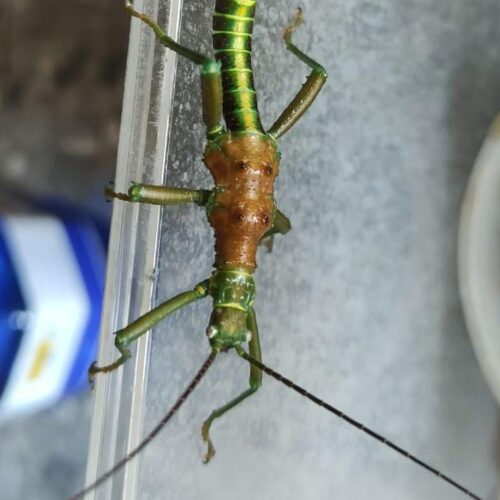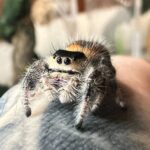
Armadillidium germanicum
8,00€
🐜 Armadillidium germanicum is a hardy isopod perfect for bioactive terrariums 🌿. Easy to care for, beginner-friendly 👌. Helps maintain a clean, healthy ecosystem 🧹. Functional, decorative, and fascinating! Add it to your terrarium today!
📝 Technical Data Sheet – Armadillidium germanicum
Scientific name: Armadillidium germanicum
Common name: German isopod
Origin: Central Europe (mainly Germany, Austria, and surrounding regions)
Adult size: Up to 1.3 cm
Coloration: Light grey with metallic sheen and textured surface
Lifespan: 1.5 to 2 years under optimal conditions
Ideal humidity: 70% – 80%
Optimal temperature: 20 °C – 24 °C (68°F – 75°F)
Recommended substrate: Mix of peat, leaf litter, and sphagnum moss
Diet: Detritivore (dry leaves, decaying wood, vegetables, calcium source)
Behavior: Conglobating (rolls into a ball), nocturnal, calm
Reproduction: Sexual; females carry eggs in marsupium
Difficulty level: Easy – Suitable for beginners and bioactive setups
🐜 Armadillidium germanicum: A hardy isopod perfect for bioactive terrariums and breeding
Introduction to Armadillidium germanicum
Armadillidium germanicum is a terrestrial isopod species native to Central Europe, particularly common in Germany’s temperate regions. Known for its ability to roll into a ball for defense, it’s a fascinating addition to terrariums and a favorite among isopod keepers and bioactive enthusiasts.
Appearance and distinguishing features
This species displays a pale grey coloration with a slight metallic finish. Its body is sturdy, segmented, and slightly rough in texture. Adults grow up to 1.3 cm in length. Like other Armadillidium species, it has the natural ability to conglobate when threatened, making it both visually appealing and behaviorally interesting.
Habitat requirements and care
Armadillidium germanicum thrives in environments with moderate to high humidity and good airflow. A mix of peat moss, coconut fiber, bark, leaf litter, and sphagnum moss creates the perfect substrate. It’s essential to provide a calcium source such as cuttlebone or calcium powder to support exoskeleton development.
Ideal temperature ranges from 20 °C to 24 °C (68°F to 75°F). While it tolerates slight nighttime drops, it should not be exposed to extreme conditions. Humidity should be maintained between 70% and 80%, with both moist and dry zones within the enclosure.
Feeding and behavior
As a detritivore, this isopod feeds on decomposing organic matter, playing a crucial role in natural cleanup. It enjoys dry leaves, rotting wood, and vegetable scraps. Occasional treats like zucchini or carrot slices are also accepted. Being mostly nocturnal, it hides during the day under bark or rocks.
Armadillidium germanicum is calm and non-aggressive, making it perfect for beginners. It coexists well with other species and contributes to the cleanliness and health of bioactive terrariums housing reptiles, amphibians, or other invertebrates.
Breeding and colony care
Breeding is straightforward under proper care. Females carry their eggs in a ventral pouch (marsupium) until fully formed young emerge. Colonies reproduce steadily, making this species ideal for breeding projects or population maintenance in bioactive systems.
| Options |
1 unit |
|---|
What is Armadillidium germanicum?
🔹 It is a terrestrial isopod species native to Central Europe, highly valued in bioactive terrariums for its resilience, easy care, and natural cleaning ability.
How big does it get?
🔹 Armadillidium germanicum can reach up to 1.3 cm in length, placing it in the medium size range within the Armadillidium genus.
Is it suitable for beginners?
🔹 Yes, it's one of the best species for beginners in isopod keeping. It requires minimal care and adapts well to various environments.
What role does it play in a bioactive terrarium?
🔹 It acts as an excellent natural cleaner, feeding on decaying organic matter. It helps keep the substrate clean and reduces mold, fungi, and organic waste.
What kind of habitat does it need?
🔹 Prefers environments with moderate to high humidity (70–80%) and temperatures between 20 °C and 24 °C. Providing both dry and humid zones is essential for its well-being.
What does it eat?
🔹 It feeds on dry leaves, decomposing wood, plant waste, and a calcium source. It also occasionally accepts vegetables like zucchini or carrots.
Is it compatible with other animals?
🔹 Yes, it is fully compatible with reptiles, amphibians, and other invertebrates in bioactive terrariums. It poses no risk and contributes to ecosystem balance.
How does it reproduce in captivity?
🔹 It reproduces naturally under stable conditions. Females incubate the young in a marsupium, where they hatch fully formed and ready to grow.
How long does Armadillidium germanicum live?
🔹 Its average lifespan is around 1.5 to 2 years, although well-maintained colonies can remain active for longer.
Related products
Brachypelma hamorii (ex smithi)
there is stock
Silkworm (Bombyx mori)
there is stock
Cubaris jupiter
there is stock
Porcellio laevis dairy cow
there is stock
there is stock
Pseudoglomeris Magnifica
Sold out
Peruphasma schultei
Sold out

